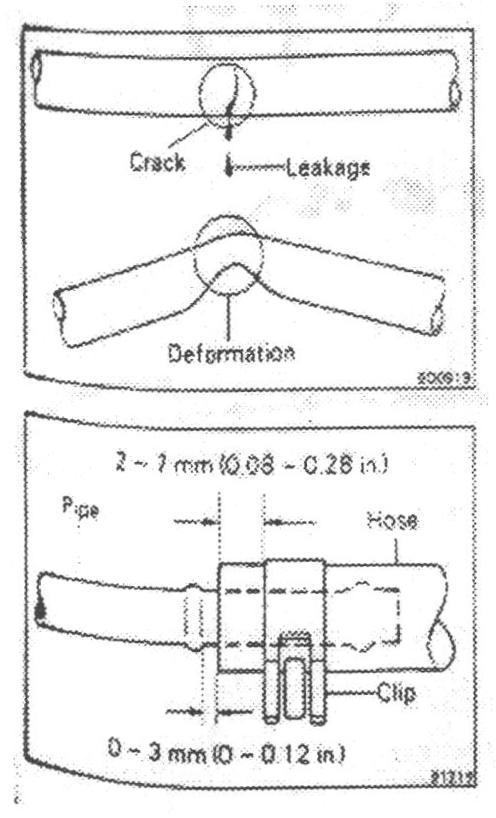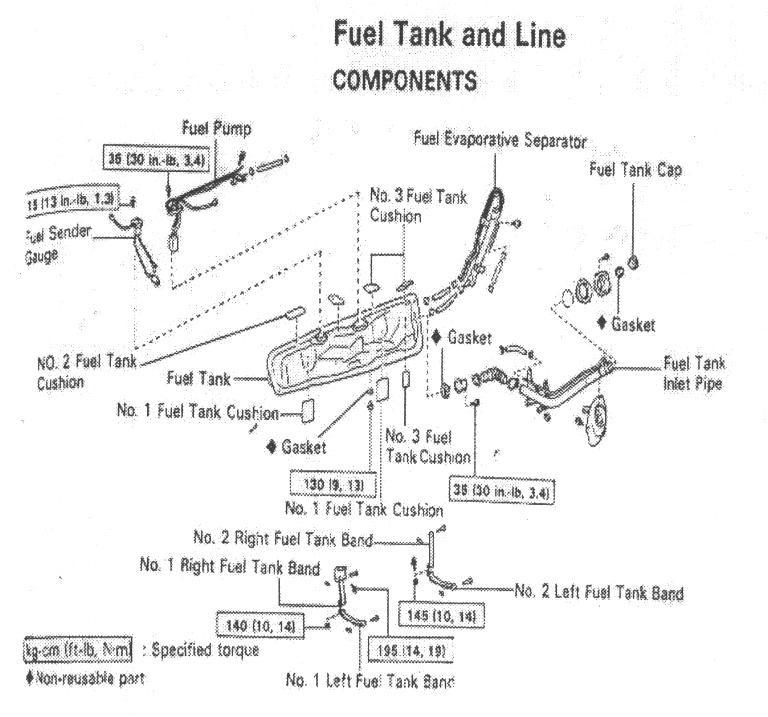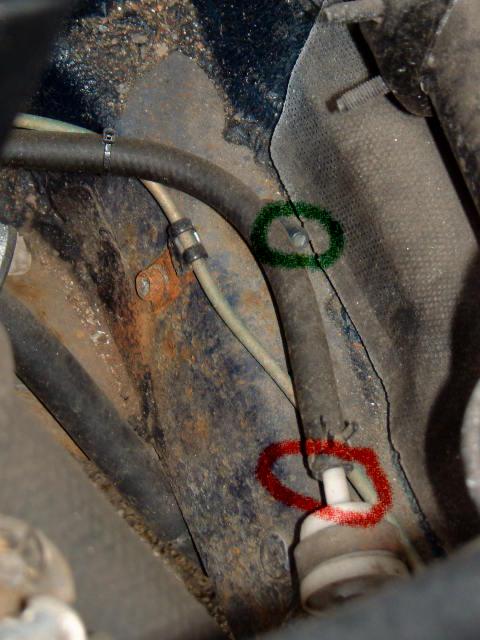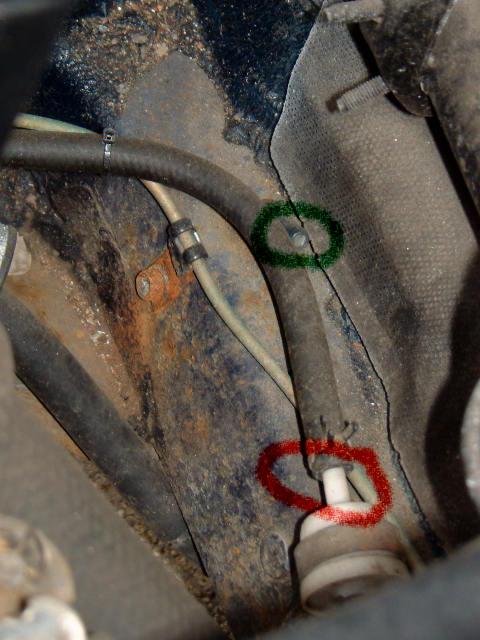PETROL FUMES
It appears that there is a vapour pipe on top of the tank, which
cannot be seen from underneath. Unfortunately it is necessary to lower the tank
to get at it. Care gas to be taken with the electrical connections to the fuel
pump, and you need to remove the centre console to disconnect them.
INSPECT FUEL LINES AND CONNECTIONS
a) Inspect the fuel lines for cracks or leakage, and all connections for
deformation
b) Inspect the fuel tank vapour vent system hoses and connections for
looseness, kinks or damage.
c) Inspect the fuel tank for deformation, cracks, fuel leakage or tank band
looseness.
d) Inspect the filler neck for damage or fuel leakage.
e) Hose and tube connections are shown in the illustration.
UPDATE OCTOBER 2006
Some owners suffer from this on their MK1s - especially in the summer months
when the windows are down - and some don't, those who don't are lucky. This is
not only dangerous, but very uncomfortable and can cause light headedness and
nausea in some cases, but what causes it? Well the main cause is that Toyota in
their wisdom decided to vent the petrol fumes from the fuel tank into the
chassis via a small valve (vapour trap) which is located in the engine bay low
down on the front chassis rail beneath the battery.
The valve is made up of a white plastic body with a pre-tensioned spring and
rubber diaphragm inside, when new this worked fairly well at keeping the fumes
back until the pressure of the fumes overcome the spring and vented the vapour
away safely allowing the diaphragm to re-seal again. However over the years the
diaphragm may have perished or the spring has simply lost its tension allowing
the fumes to constantly vent into the chassis and with the windows down or roof
off it is naturally drawn upwards into the cabin via the various holes in the
chassis hence the smell.
Now there are various ways to cure this, you can either obtain a brand new
one from Toyota at about the £30 mark, in a lot of cases this will cure it but
this largely depends on whether all the seals on top of the tank itself (fuel
pump seal and sender unit seal) are a good tight fit and not perished otherwise
you will simply be holding the fumes back only for them to vent via the seals
into the cabin.
On my own car I changed the vapour trap for a new one and still had the
smell, so decided to drop the tank (Not a nice job !!) and renewed both the fuel
pump and sender unit seals with brand new Toyota ones, imagine my reaction when
this 6 hours procedure cured absolutely nothing !!!
After talking to various people about the problem, I think Iíve found a cure,
well it certainly works on my MK1.
You need about 2 1/2ft of petrol hose exactly the same bore diameter as the
hoses that are currently attached to the vapour trap, a pair of pliers, 4 small
cable ties and 10 minutes of your time.
Jack the car up and place axle stands in their suitable places, locate the
vapour trap and disconnect the rubber pipe from both the end of the vapour trap
using the pliers and at the point where it enters the chassis rail, now attach
the new piece of hose to the end of the vapour trap and run it backwards to the
rear of the car and attach it to the rear strut rod and handbrake cable by cable
ties - DO NOT run it anywhere near the engine and make sure its a healthy 2-3
feet long, snip of the remaining cable tie ends and its job done! This now means
any fumes are exited out to the rear of the car and away and not into the
chassis sections and due to the location and length of the pipe it is nowhere
near any sources of ignition. Since doing this on my own car the petrol smell
has completely disappeared even with the windows down!
Below are a couple of pictures, the first one shows the location of the
vapour trap (circled in red) and the original entry point venting into the
chassis (circled in green) when leaning over the engine bay at the rear from the
drivers side.
The second shows the view beneath the car at the rear and shows the
relocation of the pipe and its exit (circled red) on the left hand side and
again the location of the old chassis entry point (circled green)
All work undertaken at owners risk.
TONY FROUDE



